Abu Dhabi’s Yas Marina has held the final race of the Formula 1 season more often than not since it joined the championship calendar in 2009.
But despite its enviable facilities and unique features, including a pit lane exit which passes beneath the circuit and an on-site hotel which crosses over it, a crucial aspect of the track has tended to disappoint. Its layout has generally failed to produce exciting races.After last year’s race the site operators and Formula 1 finally decided to address the problem. Motorsport architects Driven International were enlisted to revise the original layout produced by Tilke Gmbh.
“I think Covid kind of focused the mind a little bit,” explains Ben Willshire, managing director at Driven, reflecting on last year’s finale at the track which was held behind closed doors due to the pandemic.
“In the past, whilst there was some criticism about the racing, there was still fantastic concerts, a good atmosphere and a sold-out Paddock Club. And then suddenly with Covid last year, none of those are the niceties were happening. So the focus was on the track and the race and I think there was a bit of disappointment that there wasn’t a lot of overtaking.”
F1 was also eager to see better racing at the track. The call was therefore made to overhaul a layout which was designed little more than a decade ago, a decision Willshire praised: “That’s a fairly big ask when you’ve got a track that is relatively young compared to a lot of circuits, to take it on the chin and say ‘we want to look at this and we want to see what we can do to make the track better’.”
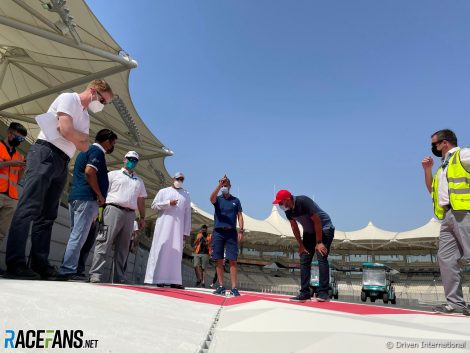
F1 themselves also gave input into the circuit design. As next month’s race will be the last for the current generation of cars, the series was keen to ensure the changes at Yas were done with an eye to how racing should change after the arrival of the 2022 machines, built to new regulations intended to aid overtaking.
“Over time the rules have changed regarding the cars, the cars have evolved,” Hughes explains. “Track design has changed a little bit and in recent years there’s been some criticism of the lack of exciting races at the track and that criticism has been picked up by both the circuit and by Formula 1, and they have conversations directly between the two of them about what they can do about that.”
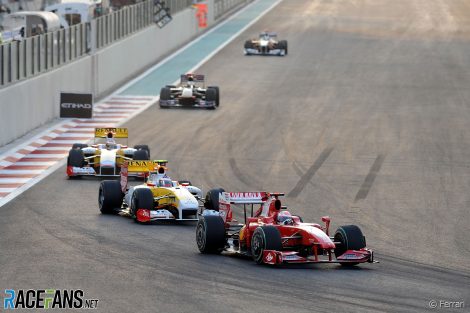
“So whilst they’re hoping that the racing will be improved for this year, they were mindful of the fact that if the cars change what they don’t want is to spend a lot of money changing the track and then that’s unravelled by the changes to the technical rules.”
The possibility of altering the track to aid overtaking was mooted for a long time before the circuit owners committed to it. Original designer Hermann Tilke even indicated changes were in the work at one stage. Proposals he drew were among those considered in the early stages of designing the 2021 changes.
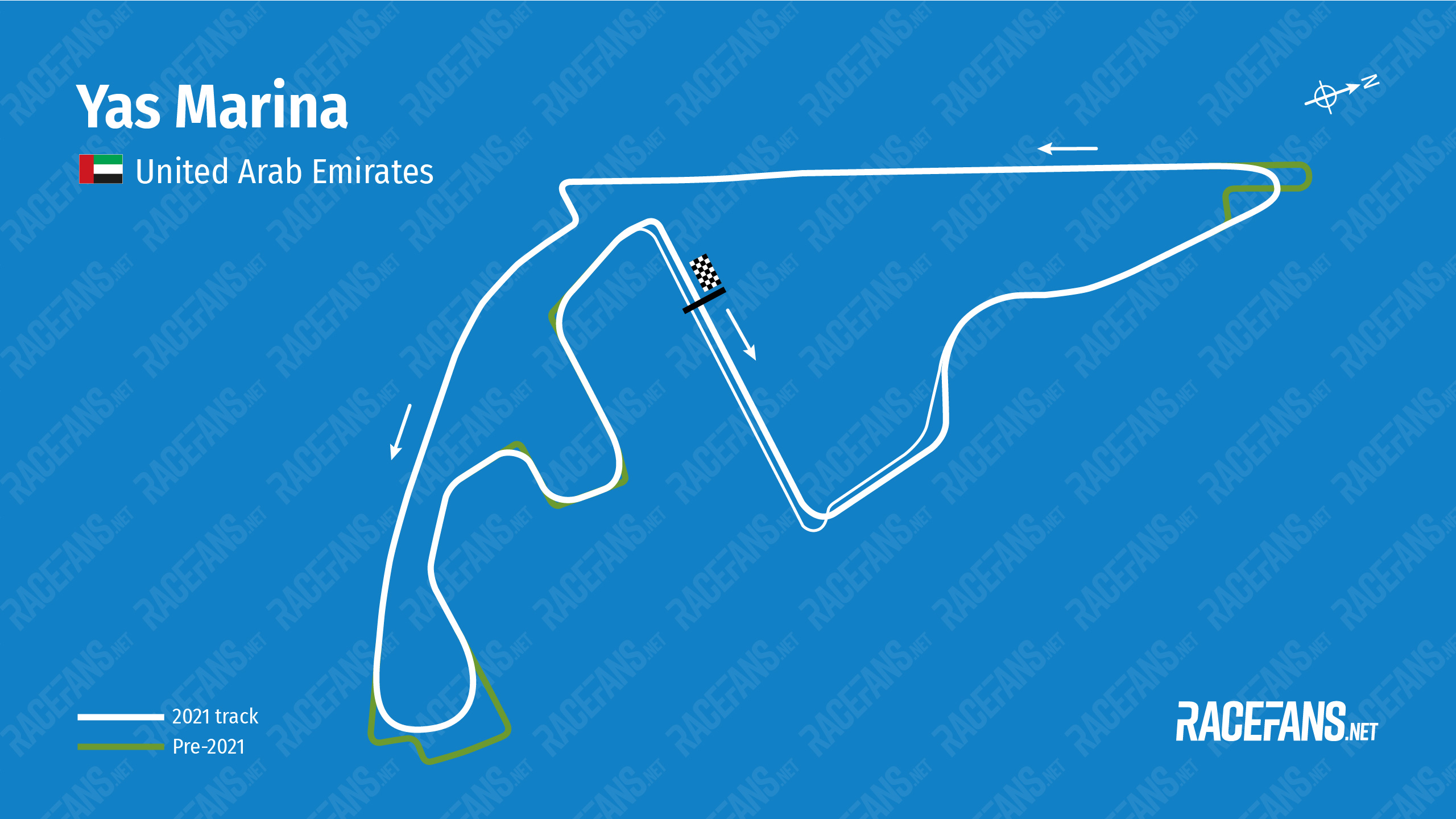
The designers also referred to the wealth of ideas generated by fans and shared online. “When you’re looking at a circuit we see lots of designs,” Willshire explains. “Myself and Mark spend a lot of time reading what fans are saying online and part of that design process was looking at what people were saying. It’s interesting to compare what the professionals are thinking versus maybe some of the amateur track designers or fans.”
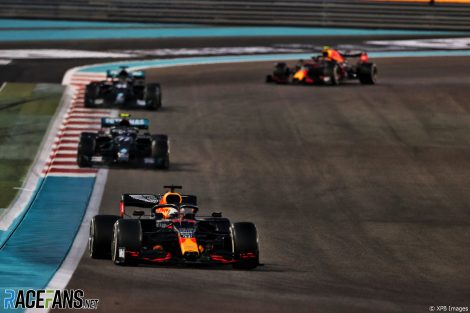
“Usually what we see at a concept stage and what we see [from] the fans is very much like a 2D line drawing, it’s a plan of a circuit with a line: ‘this is what I would do, this is some ideas’. Where we come in really is how do you then implement that in reality?
“Because as soon as you get onto the ground, what may seem like a flat circuit is not flat in reality. A metre or two of gradient change makes a huge impact on what you can really do in implementing a track design.
“You’ve also got things like the FIA safety simulations to consider, what TecPro barriers are going where, you’ve got drainage and kerbs that are already in place. In many ways upgrading a track is much harder than designing one from scratch. I would compare it to refurbishing a hotel or a house when you’ve got certain constraints that you have to work within and things you can and can’t touch.”
Having taken that into consideration, along with the ever-present limiting factors of cost and time, the team settled on three major changes which they believe will “make the most meaningful impact” on the quality of racing at this year’s Abu Dhabi Grand Prix.
Advert | Become a RaceFans supporter and
New turn five
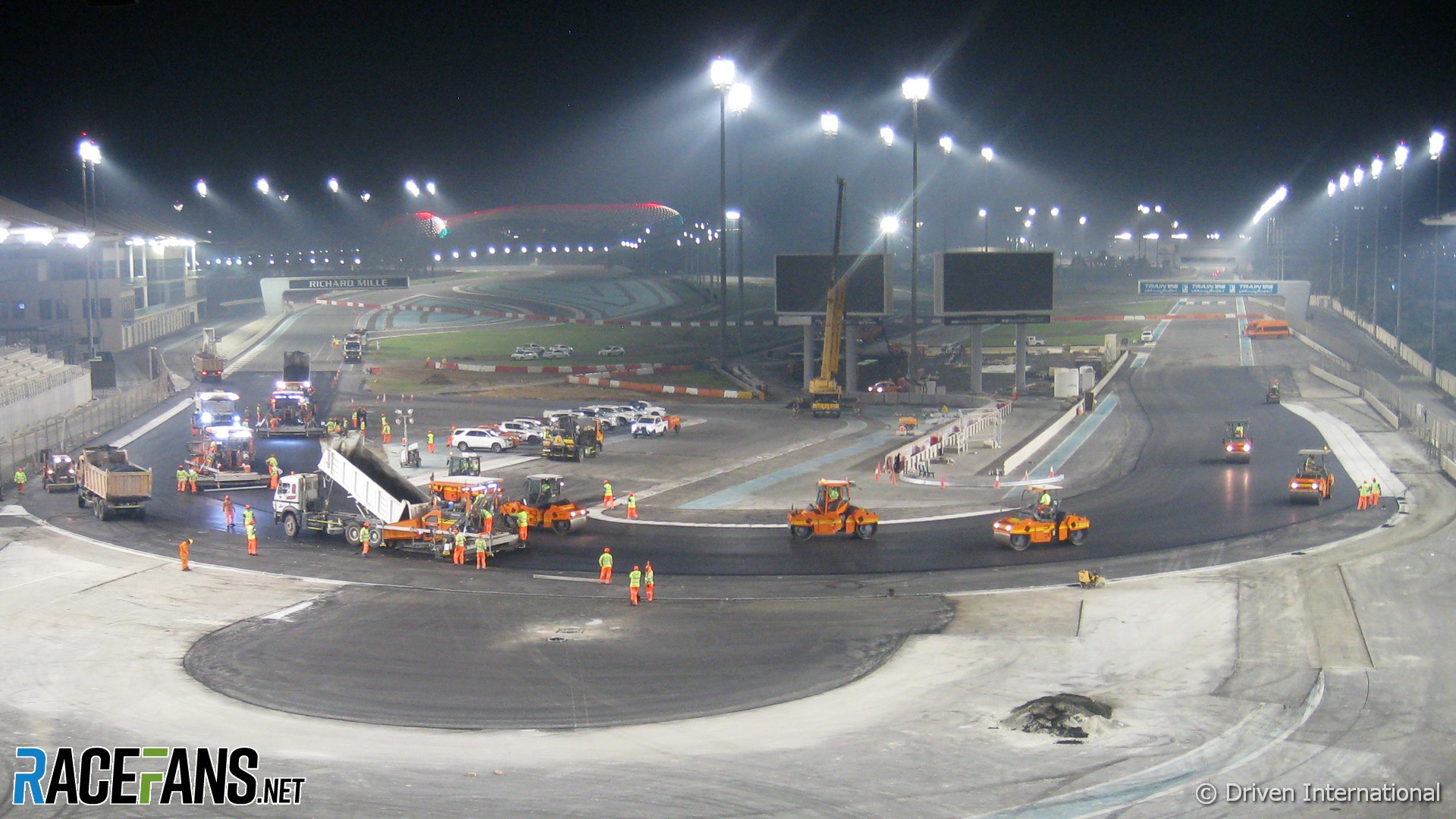
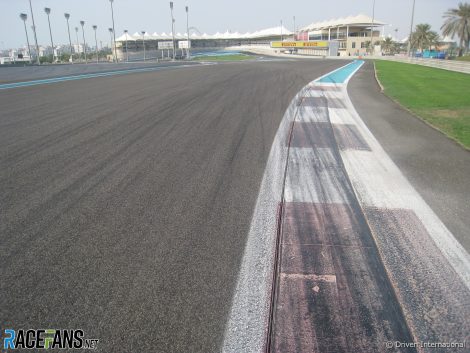
Although the necessary asphalt already existed, simply bypassing the existing chicane was not an option for F1 as the original hairpin would be approached at high speed and require more run-off space. But nor could they simply tear up the chicane.
“Part of the brief was they want to retain the chicane for their driving school and their other activities because they use it for World Rallycross and karting,” Willshire explains.
Therefore a new hairpin had to be constructed with room for the chicane to merge into the track. “Naturally you end up with a late-apex corner because it’s the only place you could put the kerb.
“Actually, it works in our favour. So what we did is we opened up the inside to make it a super-wide hairpin, we’re up at 20 metres wide and you’re coming down now [from] over 300kph.”
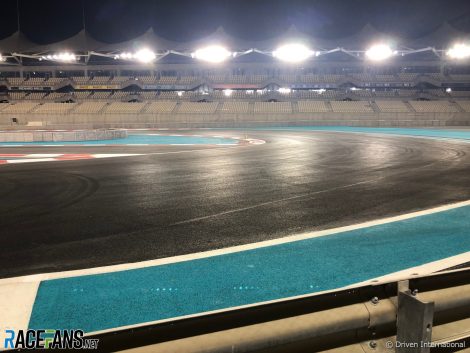
The longer approach should give drivers more of an opportunity to attack or defend on the way into the corner. The track has been widened at the exit and an aggressive kerb installed to deter drivers from running wide to keep position.
“The track actually comes out wider than the old circuit,” says Willshire. “It widens on the exit and then ties back in. That was again to carry more speed through the corner, more momentum on the exit to allow the cars to follow more closely, but also to get the racing closer to the fans.
“We wanted to bring the crowd at the track as close as possible without disrupting the views because of the sightlines to the grandstand. So the fans on the entry and the exit of this corner now are going to get a real treat sat in this grandstand, they’re going be really, really close to the cars under braking and accelerating.
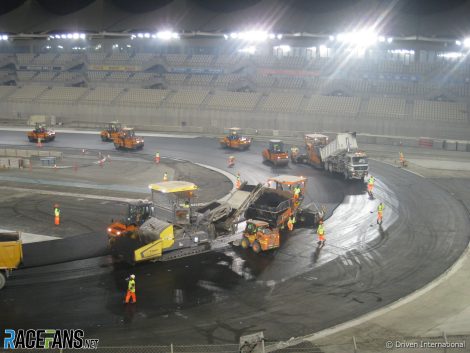
Avoiding the use of artificial grass was a key consideration as it is expensive to install and maintain, particularly at venues like Abu Dhabi which experience regular high temperatures. An extremely strong cement-like adhesive has to be used to prevent powerful F1 cars tearing it up.
The team also considered changing the following chicane, originally numbered seven and eight, but after studying footage of past races decided they were happy with it.
“If we actually look back at all of the highlights of the Formula 1 races over the past years you see that the cars are able to stay close to one another or get side by side pretty much three-quarters of the way down this back straight,” says Willshire.
Advert | Become a RaceFans supporter and
New turn nine
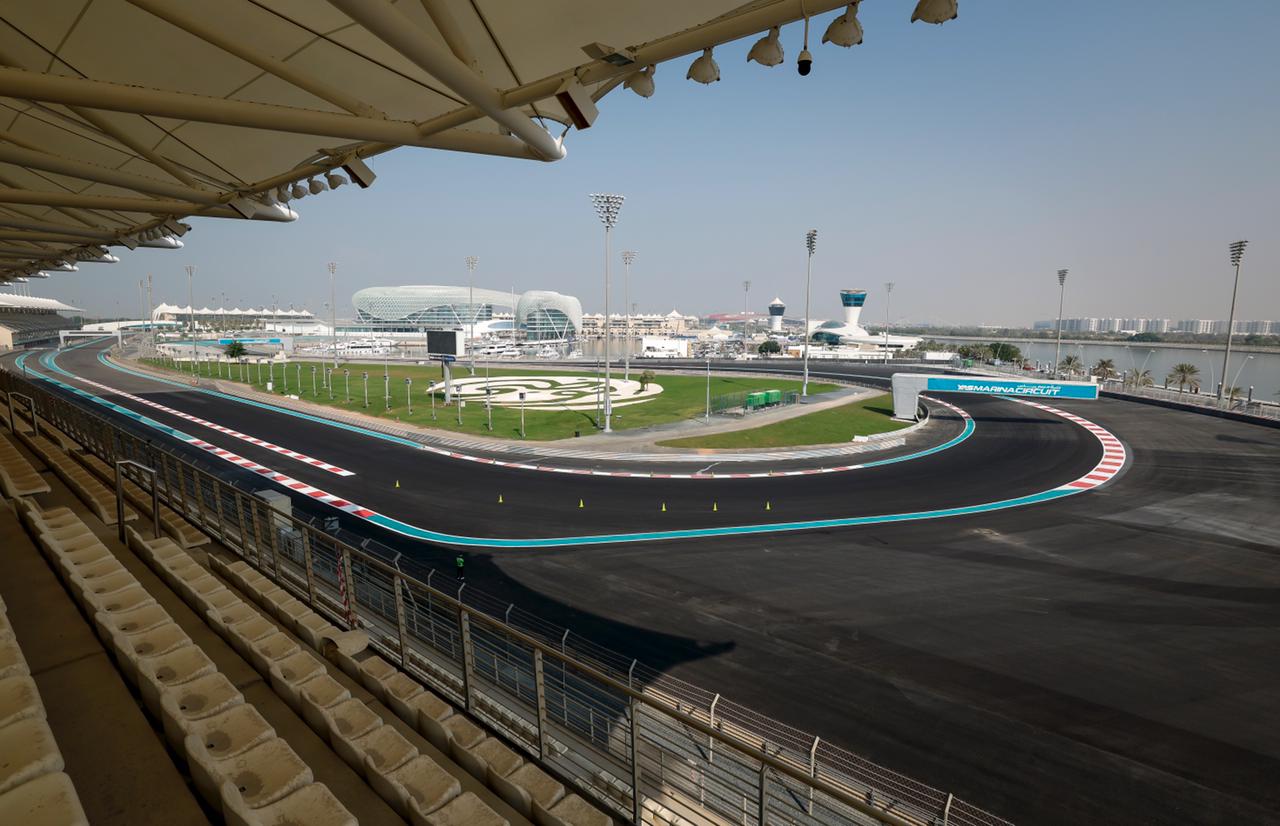
The four-corner sequence of turns 11, 12, 13 and 14 has been replaced with a single, sweeping new bend, turn nine. The early inspiration for this came from the changes made at Zandvoort, where two banked corners were added for F1’s return earlier this year.
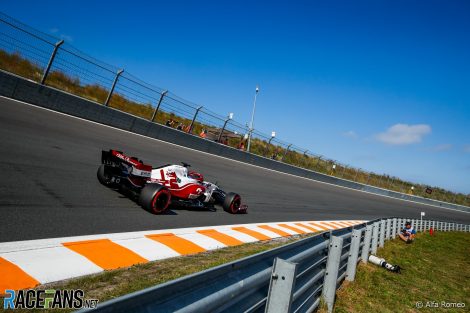
“In the original concept we were talking about having a significantly banked corner. There were studies done on Zandvoort on the corners there.
“But the physical infrastructure around there is very different to what they have at Zandvoort. In order to have a significantly banked corner there obviously you’ve got to have a banked run-off area as well and by the time you do that you end up with, we calculated, something like a six-metre high retaining wall at the back of the run-off area.
“Behind there is the access road to the marina and it’s a mooring for some of the yachts. And even some of the boats would have struggled to see anything on the track if we’d gone for that level of retaining wall. So inevitably there was a bit of a compromise there.”
The final design involved a shallower banking but one which should still allow for impressively high apex speeds of around 250kph.
“Now you’ve got high-speed entry or medium-speed entry, 5% camber which allows the drivers to carry the speed through the corner,” Willshire explains. “It’s extra-wide, and then it really just gives multiple lines on the exit.”
Again the team has tried to use physical means to keep drivers within the intended confines of the circuit. “On the exit we have designed another aggressive, double-width kerb to control the track limits so drivers will be encouraged to stay on the correct side of the white line.”
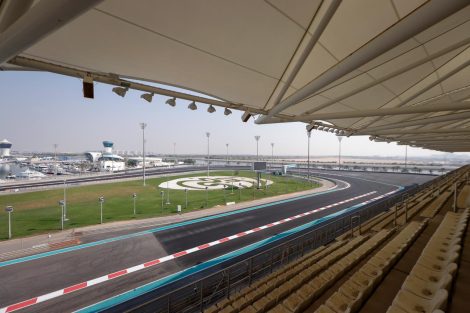
“Traditionally the left-hander at the end of the straight was an overtaking spot,” says Willshire. “Particularly in Formula 1 it was a sharp left-hander at the end of a long straight, your typical long [DRS] straight into a tight hairpin.
“What we noticed is that after the overtake there’s a lot of stop-start and what happens is by the time you’re then running into sector three towards the hotel, if an overtake’s happened, the car behind can’t stay close. You get the concertina effect, it starts to fall behind, and by the time you’re into the hotel sequence, the overtake has happened and that race between those two drivers has almost come to an end.
“So what we’re hoping to see here is cars running side-by-side on the approach to the corner. It will either create a very, very brave overtaking move – the equivalent of overtaking into the Parabolica or another high speed corner [some] side-by-side racing into the turn – or actually will some of the some of the drivers stay behind but then follow closely through the corner, use the 5% camber to stay close, use the wide track to get a different line and actually, by the time they’re coming out of the corner and into the hotel sequence, they’re still able to stay close to one another.
“The idea of this corner is to provide a signature, high-speed challenge for the drivers. It should reward bravery, it should reward different thinking around different lines. But ultimately what it’s designed to achieve is to allow the racing to continue around the rest of the lap.”
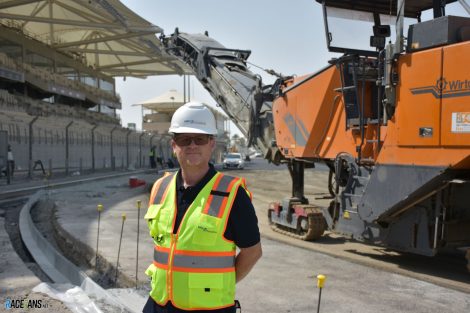
An alternative and more conventional solution involving a tighter corner was considered, but this proved too difficult to fit within the existing infrastructure in this area of the track.
“One of the designs that we did look at was more of a pinched apex on the entry and then widening out on the exit almost like turn 11 at Bahrain, the end of the back straight the left hander that opens out,” says Willshire. “We really like that corner, it generates different lines. But some of the things that would have done, it would have created a bigger braking zone and separation of the cars, which is obviously what we’re trying to avoid.”
“Also the exit of the corner really had to be where it is,” he added. “There’s some power cables running up to the Marina, which obviously is fairly crucial, but also there is some light generators and all of the lighting infrastructure in here which create constraints.”
Go ad-free for just £1 per month
>> Find out more and sign up
Turns 12, 13, 14, 15
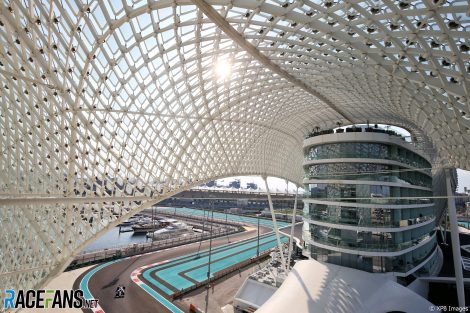
“Essentially all of these corners have just opened up on the inside,” says Willshire. Some of these corners featured negative camber which had been a focus of criticism from drivers, including Esteban Ocon after last year’s race.
The team looked into changing this aspect of the original design but concluded the knock-on effects doing so would be too problematic. Therefore the negative camber at turns 13 and 14 – the left-handers immediately before and after the bridge – remains.
“When you’re repaving a Formula 1 track, the top surface – the wearing course, as it’s referred to, – is usually around 40mm depth,” Willshire explains. “If you’re flipping cambers around over the width of the circuit, which is between 12, 14 or even 20 metres wide in some areas, you end up with something like 200 millimetres of change.
“So you’d end up reconstructing essentially entirety of the track from the ground up, including all of the run-off areas, all the barrier lines, all of the service road. So it goes from being a reprofiling project to a complete full rebuild of the entire sequence which obviously is not practical.”
Nonetheless he’s hopeful the revisions will make for a smoother, quicker sequence. “The negative cross-fall is there but what we’ve done, and we worked quite closely Formula 1 on this, by opening up the radius, we feel that we’ve got now a much more flowing sequence.
“Having driven this myself, albeit at low speed, 13 and 14 feels like a long left-hander. It’s almost like a double-apex single corner. You really flow, drive kerb to kerb and we’ve eliminated that stop-start characteristic of the previous layout.”
Faster laps, better racing?
While the changes have been limited to just three areas of the track, they are sufficiently ambitious that over half of the circuit’s turns have been altered. The rest of the layout has been largely untouched and the original asphalt remains.
The corner count has reduced from 21 to 16 and the lap length has shortened. As a result the race distance will increase from 55 laps to 58. Lap times should become much quicker too, falling by around 10 to 15 seconds.
But whether the alterations have had the desired effect of encouraging better racing is something we won’t be able to judge until the cars hit the track for the race which is likely to decide this year’s world championship.
2021 F1 season
- Verdict on error in GT race suggests Mercedes would have lost 2021 Abu Dhabi GP appeal
- Title ‘stolen’ from Mercedes made us ‘underdogs people cheer for’ – Wolff
- Red Bull Racing spent £230m during Verstappen’s title-winning 2021 campaign
- ‘I can’t box?’: Hamilton and Verstappen’s 2021 Abu Dhabi GP radio transcript
- Abu Dhabi’s legacy one year on: How the controversial 2021 finale changed F1




Yes (@come-on-kubica)
26th November 2021, 13:27
The best remodel they could do is move this track off the calendar completely!
davidhunter13 (@davidhunter13)
26th November 2021, 13:39
Well it looks much better to me, plus it couldn’t have really gotten any worse. Bring it on. Hope it delivers.
So weird to see a custom built track like that feature so many pointless right hand corners as if it was a street track. Nice to see that being changed to something with a lot more flow to it.
Ajaxn
26th November 2021, 17:19
I’ve been watching a few simulated views of the circuit on youtube and its going to be very hard to pass without the cooperation of the other drivers. Hamilton will be on the backs of the back markers before he can blink and then he’s just one inexperianced driver away from mishap. If they dont see him coming or allow for him coming through on their inside lines it could be costly. Frankly, I can see AlphaTouri and their drivers playing a part in this championship. Also its very much a walled track with no runoffs, no room for errors, which means yellow flags are bound to feature…
Qualifying will decide the start but yellow flags and strategy calls will decide the winner…
Ajaxn
26th November 2021, 17:22
Opps, for Yas Marina, read the Jeddah Street circuit.
John Beak (@johnbeak)
26th November 2021, 13:51
I am enthusiastic about this remodel. Interesting how it matches most people’s converging suggestions. Looks like they fixed most of the glaring issues of the original layout. Now it actually looks like a flowing track. Perhaps bar the chicane that breaks up the two back straights, but that’s at least a point for overtaking and switchbacks (remember some good fights there from F2). Looking forward to seeing whether it delivers on its promise.
Martin (@f1hornet)
26th November 2021, 14:00
It’s just so underwhelming not to have a track like Interlagos as the last race, with a packed out, loud crowd, history, and overtaking aplenty to decide the championship.
Pedro Andrade
26th November 2021, 14:05
This quote encapsulates very well the ills of modern F1. If you don’t have good racing, nothing else should matter. It shouldn’t take a pandemic to figure that out. Enormous disconnection with the fans right here.
petebaldwin (@)
26th November 2021, 14:32
I was going to post the same thing – already had the quote copy & pasted! They were blinded by the pretty lights and celebrities walking about and were too busy partying to bother watching the race. As there wasn’t anything else happening last year, they were forced to actually watch the race and now understand what we’ve been saying for years.
Carbonized
27th November 2021, 15:18
12 hours of Sebring, lots of people in the Zoo don’t even know there is a race going on around them.
stefano (@alfa145)
26th November 2021, 15:05
I don’t know. As useless as a track this is, the 2012 race was one of the most exciting I’ve ever watched. So it’s not much the track layout, I guessed at the time. Doesn’t take away that I would prefer to have this track removed from the calendar right now.
Srdjan Mandic (@srga91)
26th November 2021, 18:24
I think part of the reason that race was so good was Seb Vettel starting from the back, multiple SCs, obviously Kimi’s radio messages 😂 and high tyre wear.
Especially the tyres had a big impact on performance and basically kept Alonso in the title fight that season, because the Ferrari was very easy on its tyres.
David BR (@david-br)
26th November 2021, 15:10
No video/on-board available of the new layout? Even a virtual tour would be good.
It looks more flowing, always good, and the smoothed out hairpin before the big straight should be far better for rewarding/penalizing how drivers take that turn, making a bigger difference between lap times.
zomtec (@zomtec)
26th November 2021, 15:15
You may want to check youtube for the desired content.
David BR (@david-br)
26th November 2021, 17:18
Karun Chandhok‘s virtual lap.
anonymouscoward (@anonymouscoward)
29th November 2021, 19:38
Hero, thanks
jeff
26th November 2021, 16:30
Let’s see how often the drivers whine about blatantly cheating with track limits on the new track
Bryan (@ruz234014)
26th November 2021, 17:08
This track has been like a caricature of F1, or a satire making fun of rich people trying to put on a race that they don’t understand. Overdone lighting effects, gimmicky scenery, and the silly hotel over the track. It’s like a child was given a slot-car set for Christmas and told to build an F1 track. There are also human rights issues, which makes F1 rather hypocritical for holding a race here and also claiming to support racial, gender, and economic equity.
I hope the changes help, but I agree with other posters who would rather see this track gone from the calendar.
Ajaxn
26th November 2021, 17:11
I like the new faster corners, but once again would hope on the practice days the race directors also give the viewers a chance to learn the circuit. By that i mean for every camera angle selected, we the viewer should see its place on a map of the circuit. This way we can appreciated where on the circuit the action is taking place.
Right now watching SKY F1 is like watching snooker with the camera zoomed in on the cue ball. Unless you’ve had a chance to race sims of the circuit, its hard to tell where you are looking from one camera view to the next. This new circuit wont have reached the sims, which makes following the action all the more of a challenge.
Darryn Smith (@darryn)
26th November 2021, 17:46
Yeah, I don’t get the zoomed in thing. There is also never any show of speed. I was watching some early 90’s races recently. While slower the cars appeared much faster than they do now. Now reminds me of my terrible college football team and how they are zoomed in so tight to not see the lack of a crowd that I thought I was having vision problems for a bit.
Sensord4notbeingafanboi (@peartree)
26th November 2021, 19:43
Amen
Srdjan Mandic (@srga91)
26th November 2021, 18:11
I’m quite hopeful of these changes, because it looks like they will make a significant difference and also change the character of the circuit a bit.
The new hairpin looks interesting, a bit faster than the old one, but should also allow multiple lines through the corner – either take more speed into it and compromise the exit or take a wider line, compromise the entry and get a better exit onto the straight. We could see quite extreme lines through that corner, which would’ve been impossible with the old one.
Although turn 9 isn’t an overatikng opportunity anymore, it could allow battles to continue into turn 12. Depending on how fast the new corner really is, it could also have an impact on tyre wear and thus create more interesting race strategies.
Fer no.65 (@fer-no65)
26th November 2021, 19:12
I really doubt it’ll make much of a difference. It’s incredible that this place was designed like this in the first place. We complain about Barcelona, Paul Ricard and so many other circuits, but this one just takes the ultimate prize. How can you design something like this with the budget they had and that huge, empty desert to do whatever? It’s the Toyota F1 team of racing tracks, in my view. They actually built a chicane! on a brand new track!!!!!
But at least they are trying to improve it. Better late than never… Bless those guys that had to redesign it, I’m sure they cursed Tilke for months while trying to come up with new alternatives… heck, they even went to the internet to see what the fans came up with.
It’s still sacriledge, tho, that this is the finale and not Interlagos, like it should be. Australia starts, Brazil ends.
NewVerstappenFan (@jureo)
26th November 2021, 20:29
Fun, non Tilke architects. Worth a shot.
Fan inspired, also fun, I’ll judge it after the race.
I hope Lewis and Max start from the back.
Nulla Pax (@nullapax)
26th November 2021, 21:10
If the fans have helped to design it then Domisadjoke and Brown will be wetting themselves with delight about how much the fans love it before we ever even get there!
Zazeems (@zazeems)
26th November 2021, 22:30
I’ll say it again, massive kudos to the people who made this happen. Listening to fan feedback and then actually going the expense of implementing changes is incredibly admirable.
About 4 years ago I posted a design to a popular subreddit that included effectively all the changes they’ve now made. As a serial moaner about and amateur creator of race track designs it makes me so proud to think that Mark and Ben may have actually seen my design and considered it in their decision making process.
Great article as always, Keith.
Simon
27th November 2021, 21:02
https://cdnapi.paperchase.com/600/744/resize/0/0/00598169_2.jpg
Qeki (@qeki)
27th November 2021, 1:00
I’m not saying I know everything about building a track but I was redesigning a local kart track. The area you work on is already locked in place. There’s nothing you can do with the facilities and finding new ideas can be tough. If the base of the track or the original layout is bad, there is only limited number of resources to make it better for racing.
There is always a reason for the original layout but in hindsight you can only fix the mistakes that someone has already done.
We removed one “mickie mouse” section from our track and made it more open. It made the qualifying more interesting but for the race it didn’t really change anything. I’m not hoping a lot from these changes but it is a step for the better.
But in the end a kart track is just a small drop in the ocean compared to the F1 tracks. But as they say unless the track isn’t wide enough for 3 or more cars that race on the circuit, overtaking will be difficult. 20 meters may sound a lot but sometimes even that isn’t enough for two gokarts so let alone for a full size F1
SadF1fan
27th November 2021, 8:28
Unlike the small local karting tracks, the F1 tracks for the middle east had a near unlimited budget and could have been build almost anywhere.
The current purpose of the Middle Eastern tracks is to whitewash their dictatorial regimes not to produce good racing.
Jere (@jerejj)
28th November 2021, 13:59
Even if these changes don’t improve racing quality/overtaking, they’ll certainly improve lap flow.
mmertens (@mmertens)
30th November 2021, 16:25
Finally they realized that off camber corners are detrimental to good race and that we don’t want to see a circuit with straights and hairpins only. They can see now that the Tilke mantra of overtake numbers doesn’t relate to good racing, and that a flowing circuit can be more challenging and produce better packed racing. Better late than never, but what a waste of budget in the first iteration.